The History of BMX Number Plates—The Early Days
Custom BMX Number Plate Timeline*
1972: First organized BMX races take place in Southern California. Pie plates and motorcycle motocross plates and numbers are the standard.
1977: Bob Haro, Dennis Dain and many other young racers start customizing their own plates. Haro begins selling custom-made numbers to local Southern California racers. Later, he starts making custom number plates, using his hand-cut vinyl numbers and Preston Petty number plates.
August 1978: Bicycle Motocross Action magazine features Haro’s Factory Plates in the “Products” section. The write-up says, “Each Factory Plate is unique and original. Haro hand cuts the numbers from several colors of glossy adhesive vinyl, sticks ‘em on a genuine Preston Petty unbreakable number plate, pre-drills and rivets the mounting holes and even includes four tie downs.” Price was $6, which included shipping and handling. ($6 in 1978 is equal to $20 today.) According to Bob, many of his early plates, including the Pro Plates that would come later, were decorated with Contact paper, which he said, “didn’t stick very well and would get dirty right away and peel off.”
October 1978: Bicycle Motocross Action magazine runs a pictorial titled “Number Plates. . .an Art From.” It features a variety of customized plates. Most are standard oval and square plates with a variety of custom and homemade numbers and lost of stickers. One plate is made from clear acrylic.
December 1978: First contoured Haro plate (Pro Plate-type) appears on the cover of Bicycle Motocross Action magazine. Brent Patterson is using a blue, orange and yellow hand-cut vinyl plate. Instead of darts or lightning bolts to cover the seam between the two main colors, Haro used a simple rectangle. This is one of Haro’s earliest hand-molded plates and was like made using Contact paper.
January 1979: DG pro rider Clint Miller is on the cover of Bicycle Motocross Action magazine with a custom-made Haro Pro Plate. It’s done in yellow with blue darts. The issue shows that many racers were now running Haro’s plates, among them, Jeff Bottema, Eddy King, David Clinton, Jeff Ruminer, John Crews and Brent Patterson. At this time, Haro was making the plates in his kitchen (and or bedroom).
March 1979: Haro runs his first ad in Bicycle Motocross Action magazine. The ad features the Pro Plate Round and Pro Plate Square models. Both are made from hand-molded LDPE with hand-cut vinyl and have lightning bolts. Many of Haro’s lightning bolts at this time were made with chrome vinyl. Each plate had a signature and date on the back.
May 1979: Cover of Bicycle Motocross Action magazine shows six pro racers. Of those, five are using Haro Pro Plates. The sixth, Dennis Dain, is running one of his own custom-made plates. Mongoose racer Brain Curnell’s plate is a Pro Plate Square. Also note the DG rider with the 2072 plate. it’s the same plate hat appears in the above ad. The yellow is missing from the top. It was likely made with Contact paper and peeled off soon after the rider started using it. Many photos of riders at this time show them missing one, both or all the colored panels. Stu Thomsen raced with a plain plate for a long time. In the same issue, BMXA featured the Factory Plates in “The Hots” column. The article says Haro was in the process of moving away from making “one-off original. . .individual works of arts” to production plates. He also was discussing distribution deals. An Oakley ad shows Bobby Encinas, Stu Thomsen and Jeff Bottema with custom Haro Factory Plates. Haro also was making custom plates for DG’s new limited-edition California Pro bikes. Haro’s Factory Plate ad in the issue introduced the Werks numbers. It’s around this time that Haro begins renting space in the BMXA building.
July 1979: Another cover shot for Haro, this time on Harry Leary’s JMC. Bicycle Motocross Action-branded Haro Pro Plates are available for the first time for $9.95 (Approximately $32 when adjusted for inflation.). They are still made with hand-molded LDPE but the graphics are silk-screened on vinyl instead of hand-cut vinyl. They came in one color—yellow and blue with lightning bolts and the Bicycle Motocross Action logo. Haro Werks numbers are 6 inches tall, solid black and cost 50¢ each. The Haro Factory Plate ad shows a hand-made plate, but the accompanying Haro illustration shows the “Factory Plate” logo for the first time. Cook Brothers plates appear in the magazine for the first time.
October 1979: Thruster’s Timmy Judge gets the cover of Bicycle Motocross Action magazine with a custom-made Haro plate. Round and Square silk-screened Factory Plates appear throughout the issue, as well as numerous handmade plates. One Haro illustration shows a Pro Plate with the “Haro” logo on it. Up to this point, Haro was using the Factory Plates logo in his illustrations. The Haro ad is bigger and shows the Round Pro Plate with lightning bolts and the “Haro” logo. Available team colors included Redline, DG, Mongoose and Torker. Werks numbers are available in solid black or white. The original one-piece Haro Handle also appears for the first time. Company is now referred to as Haro Designs instead of Factory Plates. Square Pro Plates are no longer available.
November 1979: Bicycle Motocross Action magazine’s annual Buyer’s Guide features BMXA-branded Haro Pro Plates as well as Haro’s Factory Plates with the out-dated Factory Plate logo.
December 1979: JT offers JT/Haro Replica Plates in three colors and two-color JT Dirt Digit numbers. Jeff Ruminer is pictured with a solid black plastic Haro-style plate. (Manufacturer unknown.)
March 1980: Neal Enterprise’s Proto Plates appear in Bicycle Motocross Action magazine. They were available in flat, colored plastic with silk-screened graphics. The handlebar “wings” were not formed like Pro Plates. All varieties of Haro-made plates appear in various photos.
April 1980: Haro runs half-page black and white ad in Bicycle Motocross Action magazine.
June 1980: Curiously, BMXA SE Quadangle test bike has a Proto Plate on it. Until now, all test bikes were equipped with Haro BMXA plates.
July 1980: BMXA CYC Panther test bike has a JT Plate.
August 1980: MCS Hot Plates appear in ad in Bicycle Motocross Action magazine. Like Pro Plates, the Hot Plates were made from contoured LDPE. BMXA Kuwahara test bike has an MCS Hot Plate on it.
November 1980: Haro runs full-page black and white ad. Ad features Pro Plate, two-color Werks numbers and Haro Panel Covers in green and black. BMXA Scorpion test bike has an MCS Hot Plate.
February 1981: Haro runs full-color, full-page ad in Bicycle Motocross Action magazine. Zeronine advertises number plates and numbers. They are flat and have multi-colored fire-themed graphics.
April 1981: Most of Diamondback Team runs modified Haro plates. The lower color (yellow?) is removed so plates are black and “white” with lightning bolts. Jason Jensen’s bike has custom, one-off, black Haro plate.
June 1981: Haro Series One and Wizard plates start showing up in magazines. Both are made from contoured LDPE. Hot Inc. drops “MCS” from Hot Plate logo. RL Osborn is running a yellow and blue Haro Pro Plate with black Haro Panel Cover and his name and BMXA logo in white.
July 1981: Uni Plates appear in Bicycle Motocross Action ad. BMXA Trick Team switches from Haro to Wizard Plates. Some pros pictured using Haro Type 2 plates.
September 1981: Type 2 and Series One plates now the norm with Pros. Both are made from contoured LDPE and have Velcro fasteners. Coincides with the trend to use wider, flatter-bend handlebars. Max starts selling Max/Haro Pro Plate-style number plates for $10.95. Pro Neck Cam (flat) and Saber (flat but folded to create aerodynamic profile) plates advertised. BMXA-branded plates available in all Haro Pro Plate color combos for $9.95. Neal Enterprises offers Werks Oval stickers and Pro Line numbers. No Haro ad in BMXA.
November 1981: Haro runs full-color, full-page ad for Type 2 plate and Haro Handle in Super BMX magazine. Vera’s unveils number plates.
December 1981: Aero introduces contoured LDPE Stadium Plates. Zeronine introduces three sizes of Airflow plates with colored Velcro. The plates are made from perforated colored plastic. Neal Enterprises replaces Proto Plate with contoured LDPE Type 2-style plate. BMXA now selling BMXA-branded Neal plates in four colors. JT now sells flat plastic plates. (Manufacturer unknown.)
January 1983: Haro advertises colored Series One and Color plates and Stadium numbers in Bicycle Motocross Action magazine. Haro Flow Panel Plates also appear in magazines. These are no longer made from LDPE, but rather injection molded plastic. Aero, JT and others introduce number plates with “open” faces for better air flow-through.
April 1983: BMXA closes out BMXA-branded Neal plates at the discount price of $8.95. They are no longer advertised by June.
May 1983: Steve Veltman pictured in Bicycle Motocross Action magazine with a black and silver Hutch plate. Robinson ad shows Haro Series One Mini plates.
Summer 1983: Haro introduces injection-molded Tech Plate and injection-molded plastic numbers.
*All info was gathered from a variety of BMX publications between 1978 and 1983, though the collection of magazine was in no way comprehensive. Introduction dates are based on the cover dates of the magazines, which may have been three to four (maybe more) months behind the date of actual introduction. Info is regarding U.S.-based number plate market only.
Written by Michael Gamstetter
© Michael Gamstetter 2010
Original Article: https://fortyfour16.wordpress.com/the-history-of-bmx-number-plates-the-early-days/


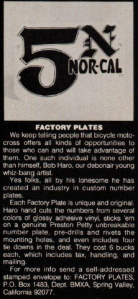
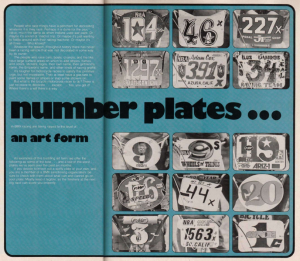
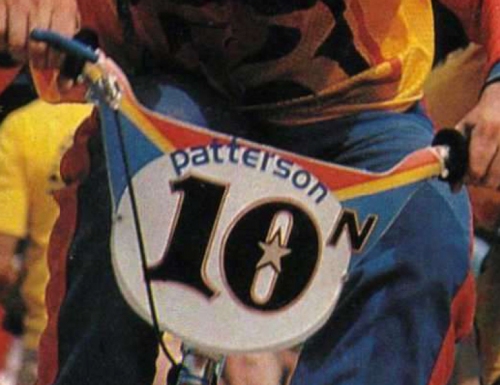
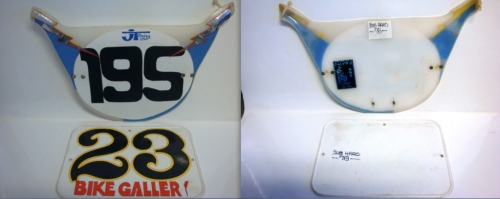
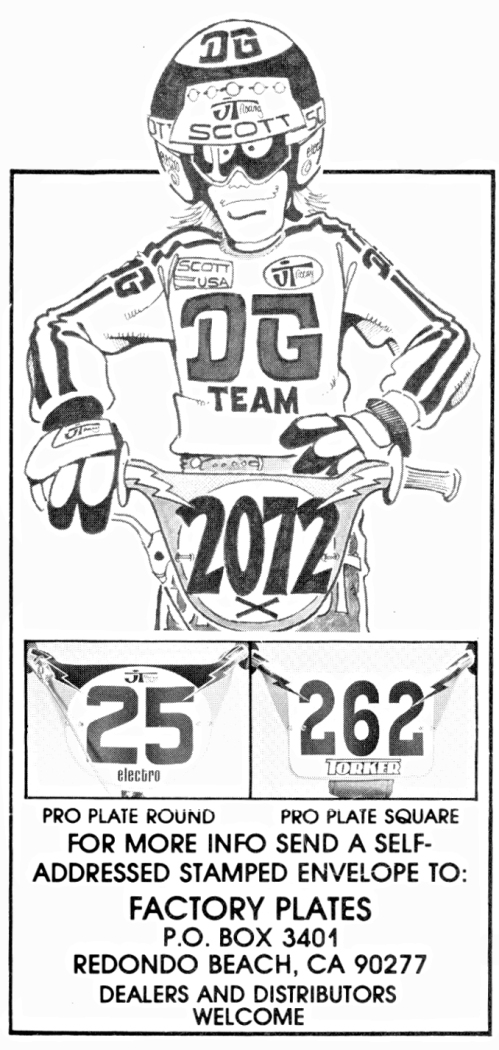
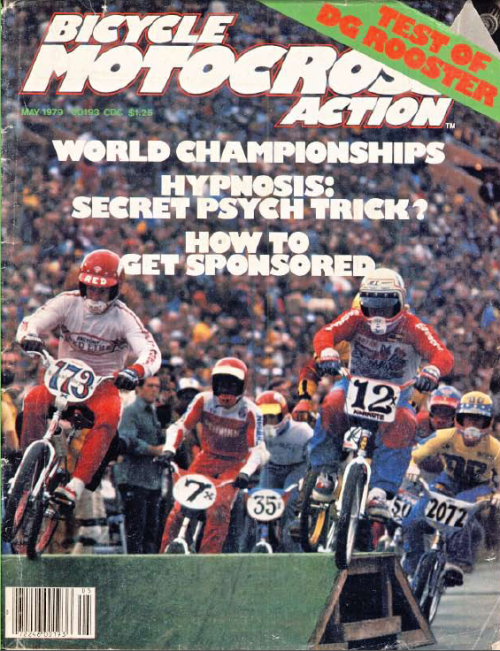
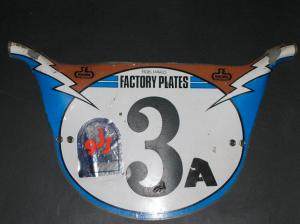

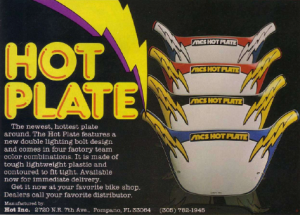



Leave a comment